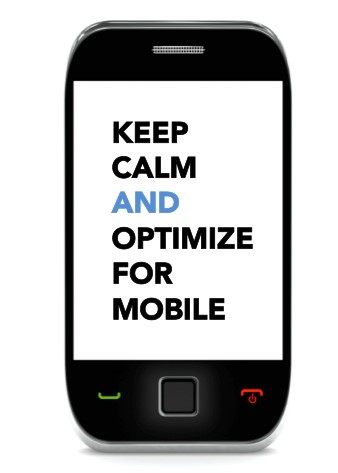There are more than 1.5 billion mobile internet users worldwide and roughly 80 percent of internet users own a smartphone. If these numbers do not encourage you to take advantage of the growing trend of mobile search, then Google’s recent announcement should give you the final push you need. 
The changes coming to Google 2015
On February 26, 2015 Google broke with tradition and gave marketers incredible insight into changes they have planned for their search algorithms and the exact day they will go into effect. Specifically, they announced that on April 21 mobile search engine results pages (SERPs) will be impacted by the mobile-friendliness of a website.
Google wants to make it easier for people using mobile devices to access websites that have been optimized for use on that device. In less than three weeks their algorithms for mobile search will shift to reflect this desire.
This is the first time that Google has given website owners forewarning about an impending change and the day the change will occur.
As site owners head back to their site dashboards, here is what they should know about the importance of this announcement.
What website owners should expect
When describing the effect these changes will have on mobile SERPs, the Google developers specifically said that there will be a ‘significant impact on search results’.
Google has encouraged website owners to take into account mobile users for a while now, hinting that they would be prioritized, but until recently it has been possible for websites to perform well without worrying too much about mobile optimization, including that for the mobile e-commerce. That will quickly change.
Now site owners who have not taken steps to ensure that their sites are mobile-ready can expect to have their mobile rankings hit hard. For businesses receiving steady customers from internet searches, this can result in a major drop in income. Google has made this announcement early so that sites have the opportunity to prepare. Remember that the goal of the search engine is to provide end users with the information they seek and a good user experience consuming it.
If your site has valuable information that performs well because customers find you helpful, they want you to continue to rank well. They simply want to ensure that their users have an optimal experience no matter what device they use.

How should companies prepare?
Google itself offers two fantastic tools that allow you to test your website to see how well it performs on mobile devices.
The first is the Mobile Usability Report that is found in your Google Webmaster Tools.
The second is a Mobile-Friendly Test that can be run on a specific page URL.
Use these two tools to gain a better understanding of how mobile-friendly your site already is and where your main challenges lie. Remember that a well-optimized mobile website will make it easy for customers to find the information they seek and complete their desired tasks on mobile devices. Think about your desired customer and the actions they are likely to perform on your mobile site. Are they there to research or find merchandise? Are they looking up an address or phone number on the way to your restaurant?
Mobile search now accounts for about 60 percent of online traffic to websites, and people use their devices to complete a myriad of tasks. Consider all the possible actions customers might take from a mobile device and use these ideas to guide the planning of the mobile site and the navigation menu. Navigation should be intuitive and easy to use with fingers instead of with a mouse. A desktop site optimized for mobile will also have a responsive web design.
Responsive web design has removes the need for alternate mobile versions of websites and gives you the ability to host a single website that automatically adjusts to the size screen that it is displayed upon. Page visitors do not want to have to scroll to the side to read a news article or have to perpetually zoom in to read the text on the page. The mobile-friendly web design removes this potential hassle. In addition to the responsive web design, Google will be looking at elements such as:
- whether or not the fonts scale for easy ready on smaller screens
- if the touch elements, such as buttons, are easy to use and spaced away from other touch elements
- if the website relies on Flash, which tends to not play well in mobile browsers
It is also important for companies to carefully consider how the demands of internet users differ depending upon where they are and the type of device they are using. The optimized mobile SEO tools used by BrightEdge, for example, allow customers to get a close look at the share of voice in their industry across various devices, such as smartphones and tablets, and compare them.
BrightEdge was the first to release Mobile SEO technology in August 2013, including mobile analytics, Mobile Share of Voice, and Mobile Site Audit. And, BrightEdge has continuously paved the way with technology and research to assist brands in defining a mobile search strategy.
BrightEdge 2014 mobile research has found that 62% of search results vary from mobile to desktop, and that tablets and smartphones make up 35% of organic search traffic. More importantly, misconfigured websites lost 68% of smartphone traffic.
Today in 2015 many brands are concerned about the impact of Google’s Mobile Algorithm update. Meanwhile, BrightEdge customers have had technology in-place for two years to help them understand their rank and the competitive landscape across 605 local, global and mobile search engines - equipping them to win in the competitive mobile battleground.
How BrightEdge Helps with Mobile Optimization
BrightEdge takes mobile reporting beyond the webmaster and to the marketer with reporting that helps brands understand their SEO and content performance by device.
BrightEdge’s mobile SEO reporting allows users to track and measure mobile device performance with things like:
- Measuring true rank by device in Universal Search (image, video, social).
- Visibility into local SEO performance by keywords and keyword groups across cities.
- Tracking and reporting on keyword trends and rankings across device type.
- Optimizing mobile campaign performance for ecommerce.
- Understanding the competitive SEO landscape and “share of voice” for a brand across mobile devices.
BrightEdge has offered a complete mobile solution for over 2 years that includes, rank and actual performance by device type used. Using this information, website designers can gain a better understanding of how to cater to their mobile customers and how to optimize their site to attract them.
Not only will this now help to attract customers, but it can also now demonstrate to the Google spiders that this website takes mobile optimization seriously, which will boost search engine rankings. Google continuously works to update its search algorithms to better meet the needs of their users while websites engage in a perpetual struggle to optimize their content according to the latest Google algorithms.
With this unprecedented announcement, Google has provided site owners with the time they need to prepare for upcoming changes and everyone should take advantage of it.
Considering that mobile now comprises of more than 1/5 of the ecommerce market, making these changes should not only help companies successfully navigate the changes, but also help them capitalize on the ever-growing mobile marketplace.
